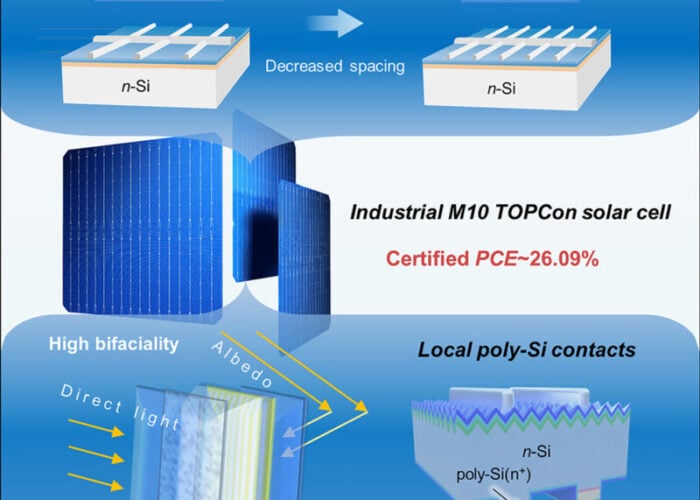
Solar PV capacity in Asia Pacific could triple to 1,500GW by 2030, with China driving deployment and Indonesia set to be the region’s fastest-growing market, according to Wood Mackenzie.
The research firm said ambitious solar targets mean China will add 619GW of PV by the end of the decade, by which time it will contribute more than 60% of Asia Pacific’s total solar capacity. In Q1 2021, China deployed 5.56GW of solar, taking its total installed capacity to 259GW as of March.
Try Premium for just $1
- Full premium access for the first month at only $1
- Converts to an annual rate after 30 days unless cancelled
- Cancel anytime during the trial period
Premium Benefits
- Expert industry analysis and interviews
- Digital access to PV Tech Power journal
- Exclusive event discounts
Or get the full Premium subscription right away
Or continue reading this article for free
Second in terms of solar additions in the region is India, which Wood Mackenzie expects to rebound from an installation decline as a result of the coronavirus pandemic in 2020-21 to add 138GW by 2030, meaning it is not forecast to meet its target of having 100GW of installed solar by 2022. The country is said to be supported by the consistent rollout of tenders, but is affected by low completion rates for projects.
Japan and South Korea are placed third and fourth, installing 63GW and 58GW of PV capacity, respectively, in the next ten years. While new additions in Japan have slowed because of high costs, the country is set to have one of the highest solar PV penetrations in power generation, growing to a 13% share by 2030.
Having awarded 208MW of solar in a recent renewables auction, Japan has almost doubled its 2030 solar deployment target to 108GW, with the government planning to expand availability for projects and install more arrays on public buildings.
Fifth on Wood Mackenzie’s list is Vietnam, which is expected to add 45GW of solar PV this decade. Supported by feed-in tariffs, the country installed 5.5GW in 2019 and 13.8GW last year. The research firm said deployment will slow in the next five years and then gradually pick up due to the gap between subsidy phase-out and economical grid parity. Curtailment issues that have affected solar projects in Vietnam are set to be addressed through an upgraded transmission grid.
“By 2030, Vietnam will have the second-highest solar PV penetration in power generation in the region. At 15% share of its total power generation, Vietnam is second only to Australia,” said Wood Mackenzie consultant Xin Zhang.
Indonesia’s solar capacity is expected to increase from 300MW to 8.5GW by 2030, making it the fastest-growing market in the region, while Australia is set to add 23GW, with deployment driven by state-level targets and the country’s green hydrogen potential.






